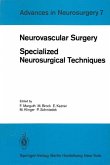The basic principles of the management of cerebral arteriovenous mal formations were established during the first phase of the neurological attack on these problems between 1930 and 1960. The leaders were CUSHING, BAILEY and DANDY, but principally OUVECRONA, and in Ger many TONNIS. The experience gained showed that complete excision of the arteriovenous angioma was the only certain cure, and therefore was the procedure of choice. In the present second phase important advances should be made and indeed are occurring. New diagnostic techniques such as total angio graphy, selective and superselective angiography, intraoperative and fluorescein angiography, and the EMI-scanner have been developed. The pathophysiological aspects have been further investigated by indirect and direct measurement of local and general cerebral blood flow. Parallel with these developments operative technique itself has been improved and modified by new methods. A more aggressive attitude has been stimulated towards those angiomas, which had to be regarded as inoperable only a few years ago. Among these many im provements and technical advances include microsurgical techniques, combined stereotactic and microsurgical procedures, artificial emboliza tion of different kinds and the cryosurgical management. Multiple variables such as the age of the patient, the type, localization, and size of the angioma, its clinical picture and the possible complica tions, such as hemorrhage have been analysed and are understood better. These factors influence the indication for, and choice of, the appropriate procedure to a great extent.
Hinweis: Dieser Artikel kann nur an eine deutsche Lieferadresse ausgeliefert werden.
Hinweis: Dieser Artikel kann nur an eine deutsche Lieferadresse ausgeliefert werden.









